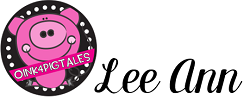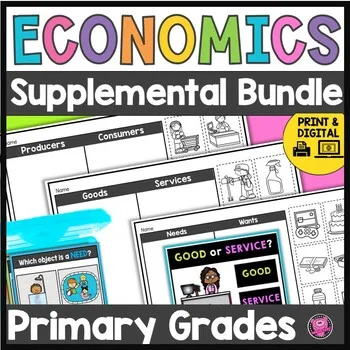Learning about money can be a daunting topic, but it doesn't have to be boring. In the fact, with the right activities and resources, you can make it fun and exciting for your students. In order to make it easier for kids to stay engaged and interested, you can explore some fun ideas and hands-on activities for teaching money in the classroom.
In this blog, you can discover exciting and creative ideas to make learning about money for your pre-k to 2nd-grade students more interactive. From understanding basic economic concepts to using play money in games, or counting worksheets, there are plenty of ways to make learning about money and enjoyable experience for both you and your students.
So let's dive in and get those young minds excited about money!
Teaching Money To Kids: 3 Basic Methods
Let's face it - counting money an be tough, especially for kids! But don't worry, it's a critical life skill that can be mastered with a little practice. In fact, counting money is closely related to number sense and place value skills, so it's worth the effort to provide intentional instruction.
If you're looking for some fun and effective ways to make counting coins easier for your 1st and 2nd-grade students, we've got you covered. check out these basic methods that are sure to make counting money breeze:
1. Let Kids Learn About Skip Counting
Before jumping into counting money, it is really important that kids know how to skip count by 5s, 10s and 25s. The more fluently they can skip counting the more fluently they will be able to count money.
For example, when counting nickels, students would count by fives: "5, 10, 15, 20..." rather than counting each individual nickel. This method can also be used for dimes and quarters. By using skip counting, students can quickly and accurately count their money without getting bogged down by individual coin values.
2. Knowing The Value And Sorting Coins
A good first step is to help them identify the different coin and their values. This means showing them both the front and the back of each coin and making sure they know what it's called and how much it's worth.
Another approach is to start by sorting the coins into groups. This way, you can focus on one type of coin at a time, which makes it easier for kids to learn. Once they get the hang of it, you can mix it up the coins and skip the sorting step.
3. Introduce Basic Financial Literacy
If kids can count money, it is time to put that skill to action and see how this plays out in a more "real world" situation. Words like "money," "budget," "save," and "spend" can be introduced in a way that's easy for kids to understand.
You can use visual aids like charts, graphs, and pictures to make it more fun and interactive. They can play pretend shopping or set up a grocery store.
4. Creating A Classroom Economy
This method involves creating a mini economy within your classroom, where students can earn, save, and spend classroom currency. It's a great way to teach kids about earning money and saving for something they want.
I've put together a bundle of sorting worksheets and digital/printable task cards that are designed to help kids understand the difference between goods, services, producers, and consumers.
These resources are a great way to get your students practicing and developing their understanding of economics, and how people use the money to buy the things they need and want.
This economics unit have some awesome activities that can help student learn about how people save and spend money. The activities are interactive and super fun, which makes it easier for students to practice and show off their understanding of important concepts like needs, wants, goods, producers, and consumers.
5. Using Play Money For Rewards and Behavior Incentives
Have you ever tried of using play money for rewards and behavior incentives? This technique is a fantastic way to make learning fun for your students and keep them on track with their behavior.
By using play money, you can create a reward system that allows your students to earn and save their cash for various treats and privileges. A few methods you could use is paying students for good behavior by rewarding them with some play money or you can hold an auction or raffle for your students, where they can use their saved up play money to bid on prizes or purchase tickets for a chance to win a special reward.
Here are some of my recommended themed play money resources that you can find in my shop!
For this resource, Tammy R. said, "My kids LOVE this! It's perfect for my piggy classroom. I'm moving to third and I'm sure they will also love this!"
Use this set of Tiger-themed play money if you are looking for a fun and easy to use behavior and reward set to help build character education.
Teaching Financial Literacy To Young Kids
Teaching kids about money can be overwhelming, but it doesn't have to be. The five hands-on ideas above are just few of the basic methods that you can use to teach young kids about money.💲
In the beginning, kids need to understand the general concept of currency and its importance on our daily lives . By making learning about currency fun and interactive, you can help your young students understand the importance of money in our daily lives.
Involving kids in real-life money situations can be a great teaching opportunity like setting up a mock bank or grocery store in the classroom. With the little creativity and some engaging activities, you can teach your students valuable life skills and that they will carry with them into the future.
Try to switch things up and discover some fresh ideas for getting your students engaged and motivated in the classroom! I hope you like reading and leaning from my blog. Enjoy your PIGARRIFIC week and look forward to the next one.🐷






